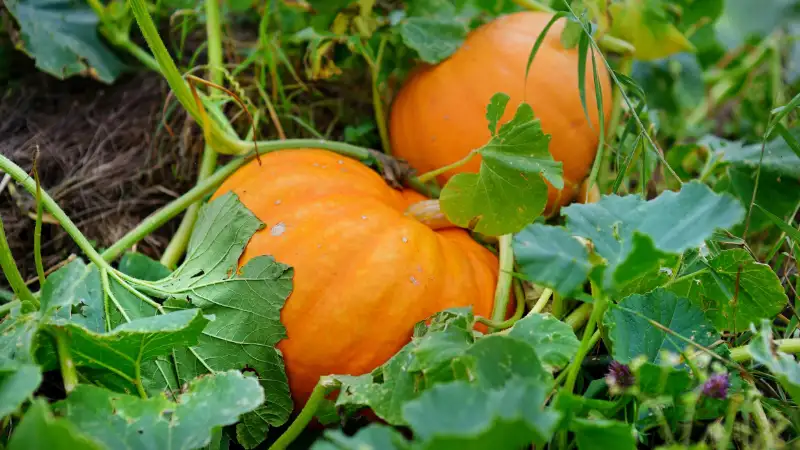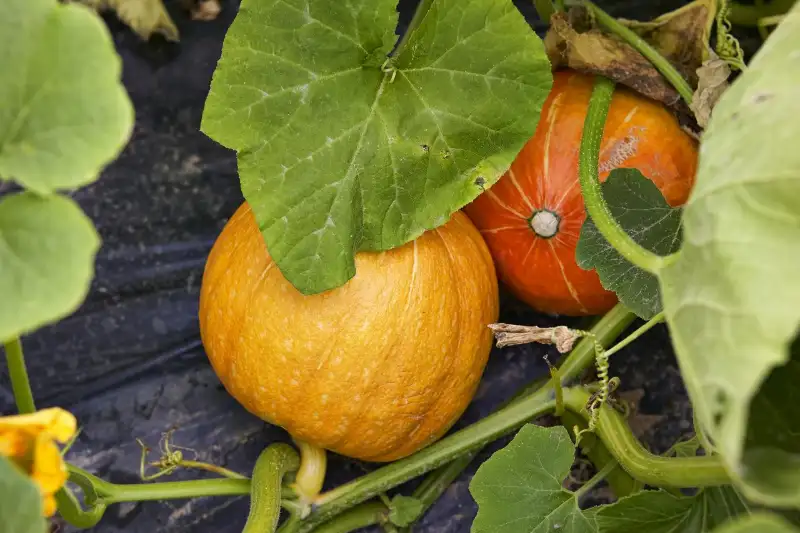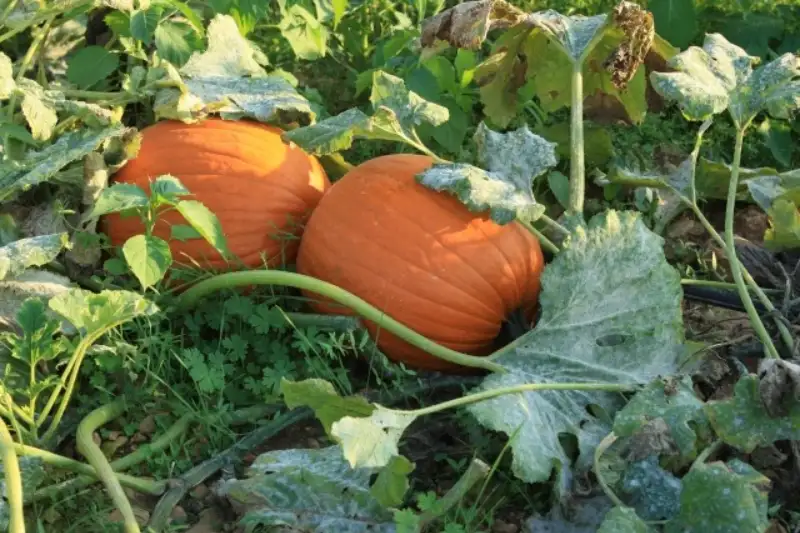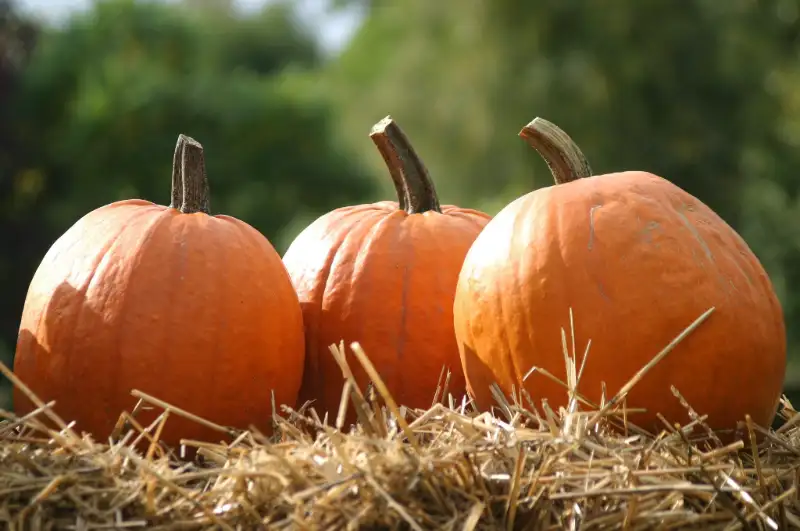Welcome to the ULTIMATE guide to growing pumpkins. You’ll gain a wealth of knowledge from here. From How long do pumpkins take to grow to how you care for them.
Have you tried growing pumpkins but in vain? Did your pumpkins not grow to become the scary HALLOWEEN ones you wanted? Well, we’ve got you covered.
Growing pumpkins isn’t that easy if you haven’t read this guide. You’ll grow the BIGGEST and JUICIEST (not to mention the scariest) pumpkin you can!
AsterGardening has had YEARS of experience in gardening. With our hands-on experience and informative guides, we will ensure that your gardening experience goes great!.
Get ready to learn the tricks of the trade and grow your own pumpkins like a PRO!

What’s the Best Time to Plant Pumpkins?

Waiting anxiously, are we? You’re waiting for that PERFECT season when your pumpkin will get the BEST environment.
Well, the best time depends on a couple of factors, like location and the climate.
As a rule of thumb, the best time to plant pumpkin seeds is when the last frost date has passed. Also, when the soil is to warm up to at least 60 degrees Fahrenheit. (Our plants HATE frost, and so do we!)
Keeping these factors in mind, the BEST TIME to sow pumpkin seeds is in late May to mid-July. Late spring or early summer. (That too in a sunny spot)
Is that still TOO early for your area? You must have cooler climates or shorter growing seasons. The solution for YOU is to start pumpkin seeds indoors and transplant them outside later. (You’re Welcome)
But always check the seed packet to look for specific instructions.
How Long Do Pumpkins Take to Grow?

A pumpkin plant grows in 6 stages. How long do those six stages take? Well, anywhere from 75 – 120 days. Now you should be aware of what the growing stages are. (Gotta be mindful of taking care of these Orange-Licious pumpkins)
Here are the main pumpkin growth stages.
Germination
After a week of planting, pumpkin seed germination happens. The seed begins to sprout.
Seedling
The pumpkin seeds will transform into pumpkin seedlings in 2 – 4 weeks. (IT IS HAPPENING!) two oval-shaped leaves will have grown.
Vegetative growth
Now, the plant will start producing more leaves. As it grows leaves, it’ll establish its root system and build its energy reserves. Vegetative growth takes 4 – 8 weeks.
Flowering
The pollination process begins! The plant has spread its leaves and grown through several weeks. Now it’ll start producing pumpkin flowers.
Flowers are either male or female, with the female being the fruit bearers. Flowering goes on for around 2 – 4 weeks.
Fruit Development
The flowers are pollinated, and the female flowers will develop your first pumpkins! (EXCITING!) Finally, your pumpkin will grow and mature over the next several weeks. Fruit development takes 8 – 12 weeks. (Be patient now)
Harvest
Finally ready for harvest. Your pumpkin is now fully mature and at its peak size. You’ll have to wait 70 – 120 days after planting your seeds to harvest pumpkins.
These growth stages take a little longer, but pumpkin growing is a pleasure!
How to Grow Pumpkins for the Best Yield?

Do you want the BIGGEST, most JUICIEST pumpkins? Well, here are some tips for growing them for the BEST yield:
- Choose a good variety of pumpkin seeds, best suited for your climate.
- Plant your seeds in well-draining soil
- Water consistently! (Have you seen the SIZE of pumpkins? Water them well)
- Give them good sun exposure. (Let the leaves take in the FULL SUN)
- Mulch the soil to suppress weeds and retain moisture.
- Monitor your plants for pests and diseases.
Here are some common problems fellow gardeners face when with their pumpkin plants.
- Pest Problems.
Look out for squash bugs, aphids, vine borers, etc. All these pests are out to attack your pumpkin plants!
You use pest-specific controls such as insecticide or try planting marigolds. (Sacrifice one plant to save the other)
- Disease Problems
You want to steer clear of diseases. How? Well, remove any infected plantings.
Another action item is to not water right from above the plant. Overhead watering can cause more problems too. (We’ll talk about this in more detail later)
- Uneven watering
Provide consistent moisture to your pumpkin plants. Use a soil moisture meter to monitor the level of humidity and water. Pumpkins require wet soil.
- Improve soil
Add compost or well-rotted manure to improve its structure and fertility.
- Thin Your Pumpkin Patch
Planting pumpkins too close to each other is never a good idea. The plant takes up a lot of space. All that’s needed is to keep them 12 inches away from each other or remove the unwanted pumpkin plant.
The main long vines can be trimmed when the length exceeds 10 feet. Vines growing out of the secondary vines should be removed right away.
- Poor Pollination
If the female flowers aren’t getting pollinated, you can try hand-pollinating them. Do this carefully, transferring pollen from male flowers to the female pumpkin flower. (Be Gentle!)
Now you know WHAT to steer clear of and what problems you might face when pumpkins grow.
When Pumpkins are Ready to Harvest?

FINALLY, the day has come! Harvesting pumpkins is one of the MOST EXCITING feelings a gardener gets. But you should KNOW when to. For that, look at the following signs:
- The rind is rigid and cannot be cut or damaged with a fingernail.
- The stems dry out and turn brown.
- The Pumpkins are ready and reached their full potential. Pumpkin skin is bright orange.
PRO TIP: Unsure if your pumpkin is ready to harvest? Well, cut a small piece of the rind and taste it. If the rind is tough and tasteless, let the pumpkin vines grow further.
Make sure to cut the stem a few inches (at least 2 inches) from the fruit. You don’t want the whole of your branch attached now, right?
Pumpkin Storing Tips

Storing pumpkins is a challenging job. Pumpkin plants are one of those fruits which bear fruit you have to store carefully. Your pumpkin crop will have you carving pumpkins, and you want them to stay FRESH.
Here are some AMAZING tips for storing your pumpkin.
- Store pumpkins in a cool, dry place with good air circulation
- Don’t store in an area with high humidity.
- If you’ve cut or carved your pumpkin, wrap it in aluminum foil and store it in the registration to keep it fresh.
- Do random pumpkin checks for signs of decay and immediately remove such parts.
- Small pumpkins can be wrapped in aluminum foil or plastic wrap and stored in a refrigerator.
Common Pumpkin Pests and Diseases

You MUST be aware of common issues your pumpkins might face.
Aphids
These tiny insects will feel on the sap of your pumpkin plant. Please get rid of them using an insecticide spray.
Cucumber beetles
These beetles transmit disease as they feed on the vines of your pumpkin. Apply an insecticide to keep them away
Powdery mildew
Mildew is a disease that appears as a powdery white substance on the leaves and stems of pumpkin plants. To prevent this from happening, avoid getting the foliage wet when watering. Fungicide can help you control it if it’s already affected your vines.
Blight
Blight causes your vines to turn yellow and wilt. Don’t practice overhead watering; provide good air circulation around your plants.
If already infected, remove the affected parts.
Squash Bugs
One way to avoid this is to plant trap groups to distract the bugs from the pumpkin plants. You don’t want your MASSIVE pumpkins to be attacked. Here are some examples of trap crops:
- Marigold
- Sunflower
- Nasturtiums
- Radishes
Make sure to grow these close but far enough for the pests not to be able to move quickly between the two plants.
FAQs about How Long Do Pumpkins Take To Grow
1. Can you water pumpkins frequently?
Pumpkins are easily susceptible to root rot and other diseases. As a good rule of thumb, you shouldn’t water pumpkins frequently. Water them once a week to moisten several inches of the soil (6 -8 inches would do)
2. Can you grow pumpkins in containers?
Yes, you can grow them in containers. But some pumpkin varieties are better suited than other plants for this type of cultivation. This variety includes ‘Jack o lantern’ and ‘Baby Boo,’ among others.
Regardless, a container of at least 20 gallons is recommended for most varieties.
3. Should you cut off dying pumpkin leaves?
Removing dying or diseased leaves from pumpkin plants is a good practice. This help prevents the spread of illness and improves overall health.
Use proper pruning shears while cutting off these leaves. Also, avoid removing too many leaves.
4. Do pumpkins like sun or shade?
Pumpkin plants LOVE the sun. They have leaves spread wide to catch in as much sunlight as possible. The sunnier their location, the better their growth will be. They often grow vines that stretch more and fruit that is bigger in more sunlit areas.
What’s Next
Now you can grow as many pumpkins as you wish. From their stages of growth to what you need to do when they’re infested. You now know it all.
Make sure to take care of your pumpkin plant EXACTLY as we told you to. Some key elements are different for every plant.
Once you get the hang of it, growing this CINDERELLA CARRIAGE will be SO EASY for you!
Did you love reading this? Check out our other blogs, and you’ll LOVE them too! You don’t want your friends to stay behind.
Please share this blog with them and have them plant pumpkins too. (Have a scary Halloween together)
